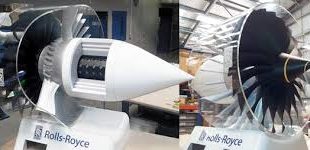Cities have become the new battleground and Hybrid or Urban Warfare the greatest threat being waged by ISIS to Boko Haram to Hamas to Ukraine rebels. Urban warfare is the only way the Islamic State of Iraq and Greater Syria will be defeated. Urban environments negate many traditional U.S. military advantages, such as massive firepower, by exploiting the U.S.’s unwillingness to risk injury to nearby friendly forces, cultural sites, or noncombatants.
New air, ground and sea based platforms and munitions are desired having capabilities of accurately engaging targets in urban terrain with low collateral damage. The size of projectiles and weapons need to be miniaturized so that they can be employed in helicopters and small UAVs, while enhancing their lethality and engagement ranges to defeat even defeat concealed targets.
In the Air Force’s latest budget request for the 2019 fiscal year, which it released earlier in February 2018, the service asked for a little more than $8 million to buy just 70 of the 500-pound class carbon fiber BLU-129/Bs, also known as the Very Low Collateral Damage Weapon, or VLCDW. At that price, each one costs more than $116,000, or at least 40 times more than the regular 500-pound class BLU-111/B high explosive bomb and more than five times the cost of even the service’s new 2,000-pound class BLU-137/B bunker buster. This figure doesn’t include the cost of precision guidance kits or specialized fuzes either.
The 227kg (500lb) BLU-129/B was originally produced by Aerojet Rocketdyne for the war in Afghanistan as a way of reducing civilian deaths by using a carbon fiber composite shell casing to limit the blast radius. These weapons reduce the chances of inadvertently killing innocent bystanders, can be more lethal but cost nearly 40 times more than regular bombs in the same class.
The development of the Very Low Collateral Damage Weapon (VLCDW) was a response to a Joint Urgent Operational Need (JUON). VLCDW has been given the identifier of BLU-129/B by USAF, and is also commonly referred to as a Precision Lethality MK-82, or PL MK-82.
The Air Force Research Laboratory teamed with Lawrence Livermore National Laboratory (LLNL) to design the PL82 composite warhead case which disintegrates during the explosion and minimizes fragmentation, thus decreasing damage and injury to nearby structures and personnel, including friendly forces and civilians. The program goal was to rapidly design, develop, test, produce, and field a new, very-low-collateral-damage warhead.
The carbon-fiber bomb body disintegrates instead of fragmenting, which adds explosive force nearby, but largely removes sharpnel issues farther away. Inside, metal particles turn the bomb’s explosive material into short-range projectiles.
Advanced engineering analysis was employed to design the warhead, and multiple iterations were performed to balance the goals of a minimum number of metal components (for low collateral damage), maximum high explosive fill volume (for near-field lethality), and sufficient case strength (for penetration).
A Mk.82 Focused Lethality Munition is just a bomb body. With the right tail kit screwed in, it could become a GPS-guided JDAM. Or it could add nose and tail kits, and become a laser-guided Paveway smart bomb. The GBU-39 SDB-I adds GPS guidance, with a pop-out wing kit on the bomb’s back to lengthen its glide range. There are many possibilities.
The bomb entered service in 2011, and had initial production run of up to 800 units, the US Air Force says it is interested in restarting production for both domestic and international consumption.
‘The BLU-129/B continues to be an operational success story in multiple theatres of operation, providing a very low collateral damage weapon to reduce unintended fratricide,’ said Jasmine Porterfield, a spokeswoman for the air force armament directorate at Eglin Air Force Base in Florida. ‘The carbon fiber enables the BLU-129/B to achieve three-times less collateral damage compared to a steel-cased MK-82 warhead, and the tungsten-laden case high explosive has a higher near-field lethality.’
The BLU 129 is described as having innovations called “adapted effects design” with a contained lethal radius, yet precise and substantial destructive ability. “This allows a much-reduced size of warhead with the same kill capability,” said Stutzriem. By extension, the BLU 129 facilitates variable-yield effects allowing for extremely effective, yet precise and more narrowly-configured attacks.
References and Resources also include:
https://www.globalsecurity.org/military/systems/munitions/blu-129.htm
 International Defense Security & Technology Your trusted Source for News, Research and Analysis
International Defense Security & Technology Your trusted Source for News, Research and Analysis


